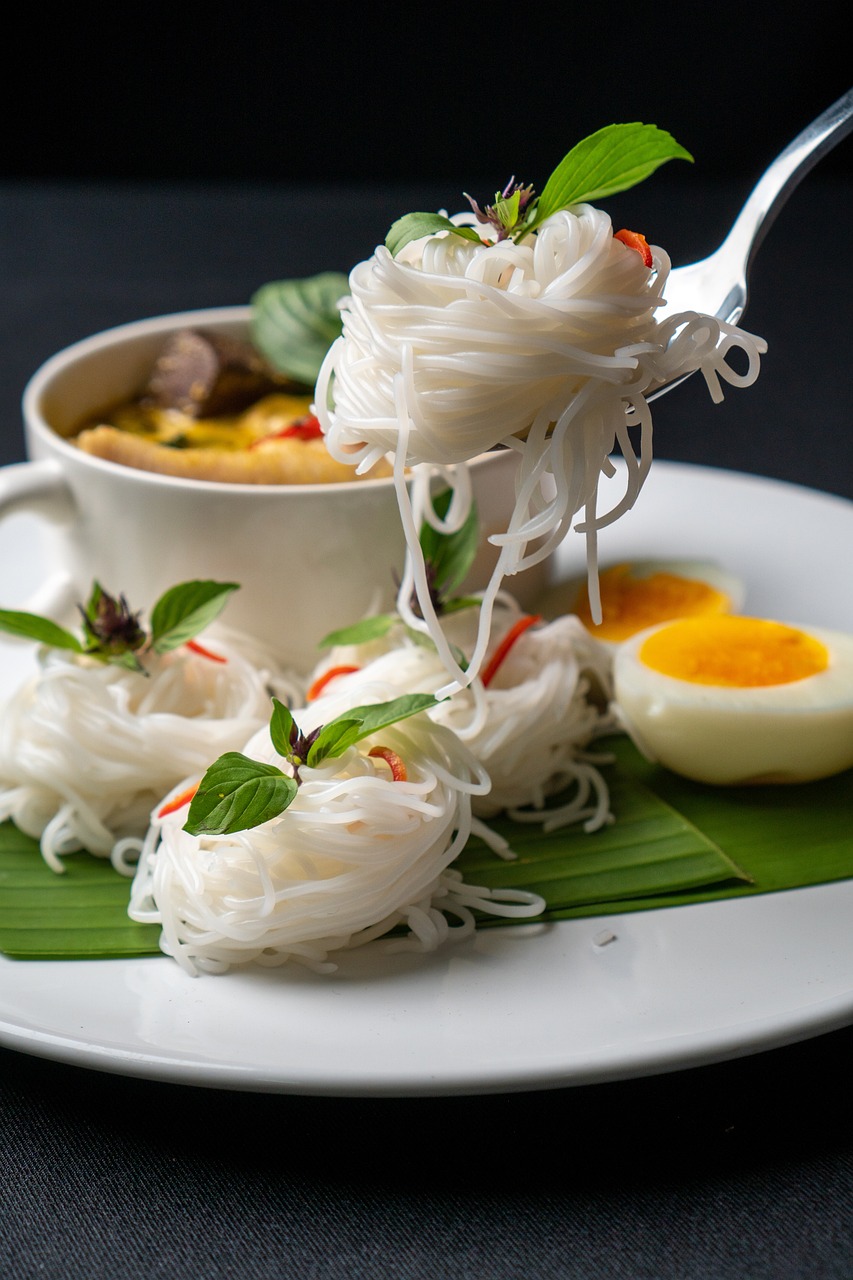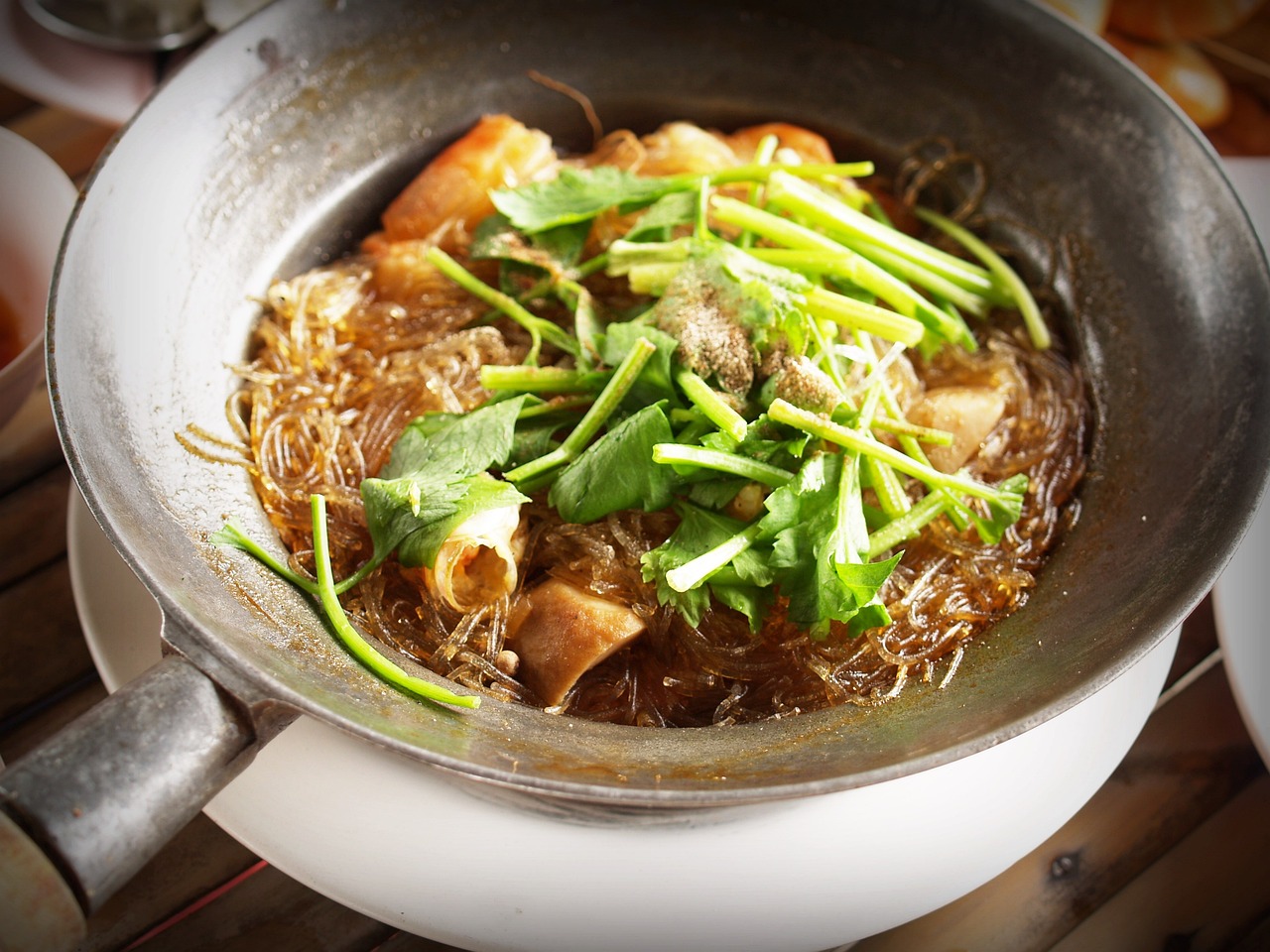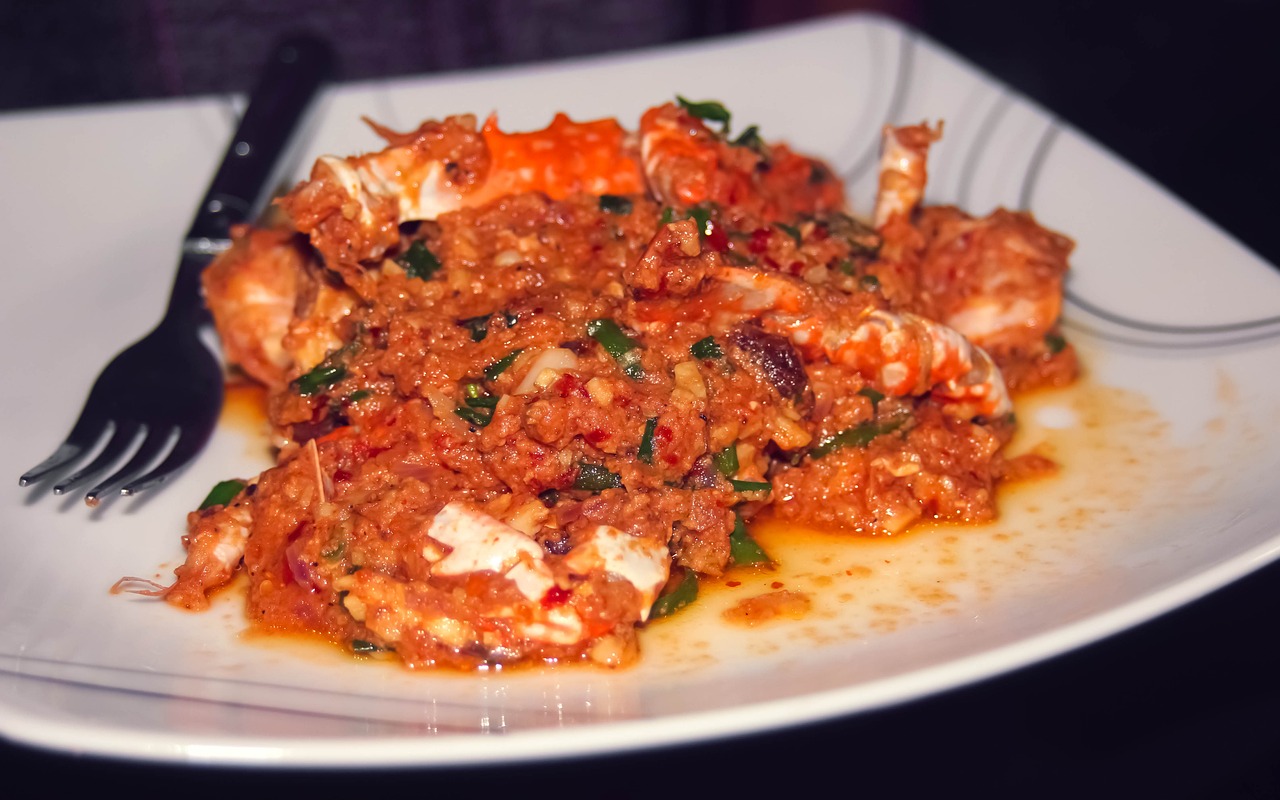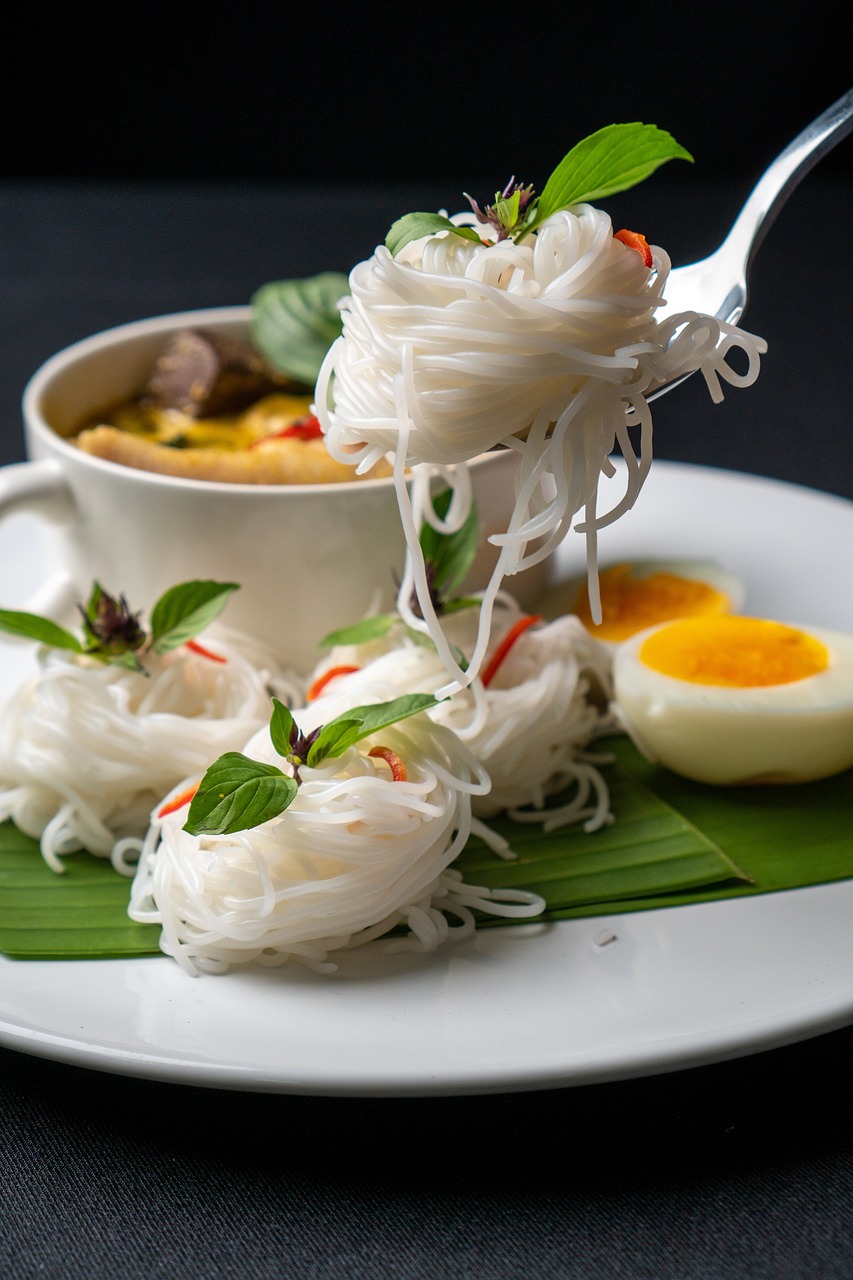Step into the vibrant and aromatic world of traditional Thai curries with Tastepan.com. Embark on a culinary adventure that will transport your taste buds to the bustling streets of Thailand. From the fiery and flavorful Red Curry to the herbaceous and refreshing Green Curry, and the sweet and savory Massaman Curry, each dish offers a unique blend of spices and ingredients that will leave you craving for more. Join us as we uncover the secrets behind these mouthwatering Thai curries and discover the rich heritage that makes them a beloved part of Thai cuisine. Get ready to embark on a tantalizing journey of flavors that will leave you wanting to book your next flight to the Land of Smiles.

Ingredients
Thai curries are known for their vibrant flavors and aromatic spices. Each curry has its own unique combination of ingredients that contribute to its distinct taste. Here are the key ingredients for the three most popular Thai curries:
Red Curry
- Red curry paste
- Coconut milk
- Meat or vegetables of your choice (such as chicken, beef, shrimp, tofu, or mixed vegetables)
- Fish sauce
- Thai basil leaves
- Red chili peppers
- Kaffir lime leaves
- Palm sugar
Green Curry
- Green curry paste
- Coconut milk
- Meat or vegetables of your choice (such as chicken, pork, fish, or eggplant)
- Fish sauce
- Thai basil leaves
- Green chili peppers
- Kaffir lime leaves
- Palm sugar
Massaman Curry
- Massaman curry paste
- Coconut milk
- Meat or vegetables of your choice (such as beef, chicken, lamb, or sweet potatoes)
- Fish sauce
- Thai basil leaves
- Tamarind paste
- Cinnamon sticks
- Cardamom pods
- Palm sugar
- Roasted peanuts
Preparation
To prepare these Thai curries, you will need to follow some general steps. Here’s a brief overview of the preparation process for each curry:
Red Curry
- Heat a pan and add red curry paste. Stir-fry until fragrant.
- Add coconut milk and bring it to a simmer.
- Add your choice of meat or vegetables and cook until cooked through.
- Season with fish sauce, palm sugar, and kaffir lime leaves.
- Garnish with Thai basil leaves and red chili peppers.
Green Curry
- Heat a pan and add green curry paste. Stir-fry until fragrant.
- Add coconut milk and bring it to a simmer.
- Add your choice of meat or vegetables and cook until cooked through.
- Season with fish sauce, palm sugar, and kaffir lime leaves.
- Garnish with Thai basil leaves and green chili peppers.
Massaman Curry
- Heat a pan and add massaman curry paste. Stir-fry until fragrant.
- Add coconut milk and bring it to a simmer.
- Add your choice of meat or vegetables and cook until cooked through.
- Season with fish sauce, palm sugar, tamarind paste, cinnamon sticks, cardamom pods, and roasted peanuts.
- Garnish with Thai basil leaves.

Flavors and Spices
Each Thai curry offers a unique blend of flavors and spices that make them so delicious. Let’s explore the distinct characteristics of each curry:
Red Curry
- Spicy and rich in flavor.
- The red curry paste gives it a deep red color and a complex taste.
- It has a combination of heat from red chili peppers and sweetness from palm sugar.
- The aromatic spices like kaffir lime leaves and Thai basil add a refreshing and fragrant element.
Green Curry
- Known for its intense and aromatic flavor.
- The green curry paste creates a vibrant green color and a spicy kick.
- It has a well-balanced heat from green chili peppers and a touch of sweetness from palm sugar.
- The combination of kaffir lime leaves and Thai basil adds a citrusy and herbal aroma.
Massaman Curry
- Famous for its rich and creamy taste.
- The massaman curry paste lends a unique blend of spices and flavors.
- It has a mild heat with a hint of sweetness from palm sugar and tamarind paste.
- The roasted peanuts provide a delightful crunch and nutty flavor.
Serving Suggestions
Thai curries are typically served with steamed jasmine rice, which helps balance the spiciness and richness of the curries. Here are some additional serving suggestions to elevate your curry experience:
Red Curry
- Serve red curry with a side of fresh cucumber and steamed vegetables to add a refreshing element.
- Add a squeeze of lime juice to enhance the tangy flavors.
- Top it with a sprinkle of chopped cilantro for added freshness.
Green Curry
- Garnish green curry with sliced Thai chili peppers for an extra kick.
- Serve it with a side of jasmine rice and crispy fried shallots.
- Add a dollop of coconut cream on top to enhance the creaminess.
Massaman Curry
- Serve massaman curry with a side of roti, a type of Thai bread, for dipping.
- Top it with a sprinkle of crispy fried onions for a delightful crunch.
- Add a squeeze of lime juice for a tangy twist.

Variations
While the traditional Thai curries have their own distinctive flavors, there are also variations that cater to different preferences. Here are some popular variations of each curry:
Red Curry
- Yellow curry: A milder version of red curry with the addition of turmeric and yellow curry paste.
- Jungle curry: A spicier and less coconut milk-based curry with a thinner consistency and a stronger herbaceous taste.
Green Curry
- Panang curry: A creamy and mild variation of green curry with the addition of peanuts and Panang curry paste.
- Southern Thai curry: Known for its fiery heat and use of local ingredients like turmeric and fresh turmeric rhizome.
Massaman Curry
- Pumpkin curry: A vegetarian-friendly variation made with pumpkin instead of meat, creating a naturally sweet and creamy curry.
- Coconut-free curry: A variation that omits coconut milk, resulting in a lighter and less rich curry.
History and Origins
Thai curries have a rich culinary history that reflects the country’s diverse cultural influences. Let’s delve into the history and origins of each curry:
Red Curry
- The origins of red curry can be traced back to Central Thailand, where it was influenced by Indian and Malay cuisines.
- The red curry paste was adapted from Indian curry spices, while the use of coconut milk and local ingredients gave it a distinctly Thai twist.
- Red curry became popular during the Ayutthaya period in the 14th century and has since become a staple in Thai cuisine.
Green Curry
- Green curry has its roots in Central Thailand, particularly in the historic capital city of Ayutthaya.
- The curry paste was influenced by the use of fresh green chili peppers, which were abundant in the region.
- Green curry gained popularity during the reign of King Rama VI in the early 20th century and has since become one of Thailand’s most beloved curries.
Massaman Curry
- Massaman curry has a fascinating history that traces its origins to the Malay-Muslim community in Thailand’s southern region.
- It is believed to be a fusion of Thai, Malay, and Indian culinary influences.
- The name “massaman” is thought to derive from the Malay word for “Muslim,” reflecting the influence of Muslim traders in the region.
Conclusion
Thai curries, whether it’s the fiery red curry, the aromatic green curry, or the rich and creamy massaman curry, offer a culinary journey through the vibrant flavors of Thailand. With their unique combinations of spices, fragrant herbs, and rich coconut milk, these curries are sure to tantalize your taste buds. Whether you prefer the spiciness of red curry, the intense aroma of green curry, or the comforting creaminess of massaman curry, there is a Thai curry to suit every palate. So, get your apron on, gather the ingredients, and embark on a Thai curry adventure in your own kitchen.

